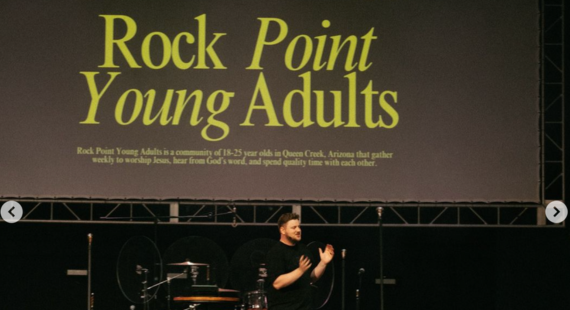There is an old saying: If you do what you’ve always done, you will get what you’ve always gotten.
The mandate of the Great Commission to make disciples of all nations remains unchanged, but our methods for sending need to stay current and relevant. Twenty-first-century mobilizers are tasked with mobilizing three to four distinct generations. Gen X, Millennials and Gen Z each have unique characteristics and stimuli that motivate them to action. Therefore, in light of our current mobilization landscape, we won’t get to where we want to be if we do what we’ve always done.
I want to clarify what I mean when I use the words robust and strategy. Robust does not necessarily mean you throw out the traditional way your organization identifies and sends new missionaries. It just means you add additional methods to attract all generations.
Most mission organizations use the traditional Western recruiting model from churches and perhaps Christian universities to mobilize new workers. However, in recent years, those pools have begun to shrink. If nothing else, Gen Z is smaller in population than the Millennial generation.
So, if we look at the different ways to mobilize as tools in our toolbox, we want to have a variety of tools, such as a hammer, a wrench and a screwdriver to perform different functions. If you only have a hammer, you can only do one thing. Creating diverse streams for new candidates to engage with your organization is imperative for success.
The word strategy in Christian circles can almost be a bad word. Some may say it implies a lack of faith in God and trust in the Holy Spirit to work and move.
But what if we strategize with prayer and total dependence on God? The Lord himself is strategic in everything he does. Therefore, it is possible to prayerfully develop strategic plans and hold them with open hands so God can change them as he wills.
When I served as a Converge global worker in Ukraine, we had time around the bonfire every summer at every camp or church retreat. I learned how to start a fire during these cool summer evenings because I did not have many opportunities to do that when I grew up in New York City. I learned there is a method — or strategy — to build a good fire: You start with small twigs and maybe some scraps of paper. Once you have the small pieces, you stack the firewood almost like a teepee, leaving room for oxygen to make its way through the stack, feeding the fire. If you just throw some wood on the ground and try to light it, nothing will happen.
This is what we must do with our mobilization strategy. We must arrange the different options and methods for mobilizing and allow God to send the people.
A Realistic Assessment
What are your organization’s current practices? How has your organization changed in the past two years because of COVID-19? Has anything changed at all in the way you mobilize new missionaries? What are the gaps in your approach to mobilization?
Take a few minutes to think. Then list the gaps in how your organization does mobilization.
Build in the Gaps
Every organization is different, so I do not recommend taking a program or approach for mobilizing and copying it verbatim for your organization. Instead, we must learn to take the concept and contextualize it for our organization.
When I was in architecture school, my classmates and I were given a project to build a building in an empty lot in an existing neighborhood in downtown Baltimore. Each of us had a choice; either build something that reflected the current fabric of the area with some modern elements or ignore the other buildings and the neighborhood’s character and design whatever we wanted, even though it may stick out like a sore thumb.
It is good to conduct the assessment and have areas for development identified up front, but then I recommend building them out one by one. It will likely be frustrating and ineffective if you try to create four of five new streams for mobilization at once. Instead, my recommendation is to begin with the one that is the easiest to implement using your current business systems or the one that will be a game changer for your organization.
Converge has identified some gaps and begun to build new paths to mobilizing. We began with a way to influence youth and young adults through internships. The next area was to move toward having our onboarding as a discipleship process from application to deployment instead of a few random events and seemingly disconnected activities. Finally, we began training and assigning coaches to new appointees.
We are currently wrapping up a workgroup tasked with creating a prototype for increasing diversity, inclusion & belonging within Converge International Ministries using Design Thinking for Innovation. A prototype was presented and approved by the International Ministries leadership team. We rolled out the prototype with the leadership team in January 2023. We hope to roll out a second prototype for our global staff by the end of 2023.
Your turn
Now, it’s your turn. Take some time to dream and determine where you can build for your organization. Write your ideas down.
Let’s discuss the topic of innovation briefly. To innovate something new:
- You will have to take a risk because you don’t know what you don’t know, and there is a chance no one has ever done anything like it.
- You have to be careful not to invest too much capital too soon.
- You have to create and test a quick prototype.
- Don’t get emotionally attached to your prototype.
- You have to commit to the 10-25% rule (10-25% of your time is spent on innovation). If you think this is too much, look at successful secular companies like 3M or Apple. Some may say, “Yeah, but that’s the world.” My question for those who say that: What if you can use principles (that are not sinful) from the world to advance the kingdom of God?
Using Design Thinking for Innovation is a simple and quick way to implement change. There are five steps that take place in an iterative cycle.
Step 1: Gather empathy through observation, experience or interviews
Step 2: Define the problem
Step 3: Redefine and ideate
Step 4: Create a prototype
Step 5: Test and redefine if necessary
Being collaborative will allow us all to reach our goals faster. Our organizations are not in competition with each other, after all. We all have the same goal — helping people far from God meet, know and follow Jesus.
So, sharing your ideas, experiences and successes should become common practice. Learning from others will also afford us faster forward progress toward our collective goal.
If we are unwilling to change how we mobilize in this new time, we may become ineffective or irrelevant at best — or obsolete at worst.
Converge is asking God for a gospel movement among every least-reached people group – in our generation. Learn how we are playing a role in accomplishing the Great Commission and how you can be involved.



